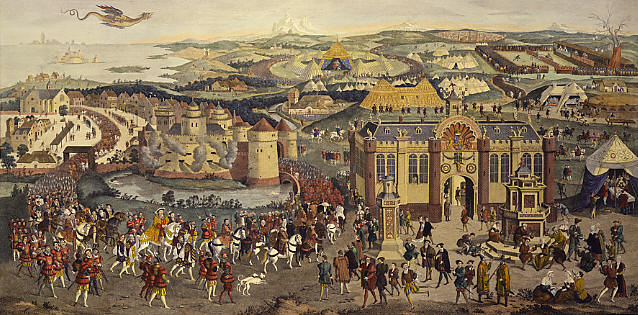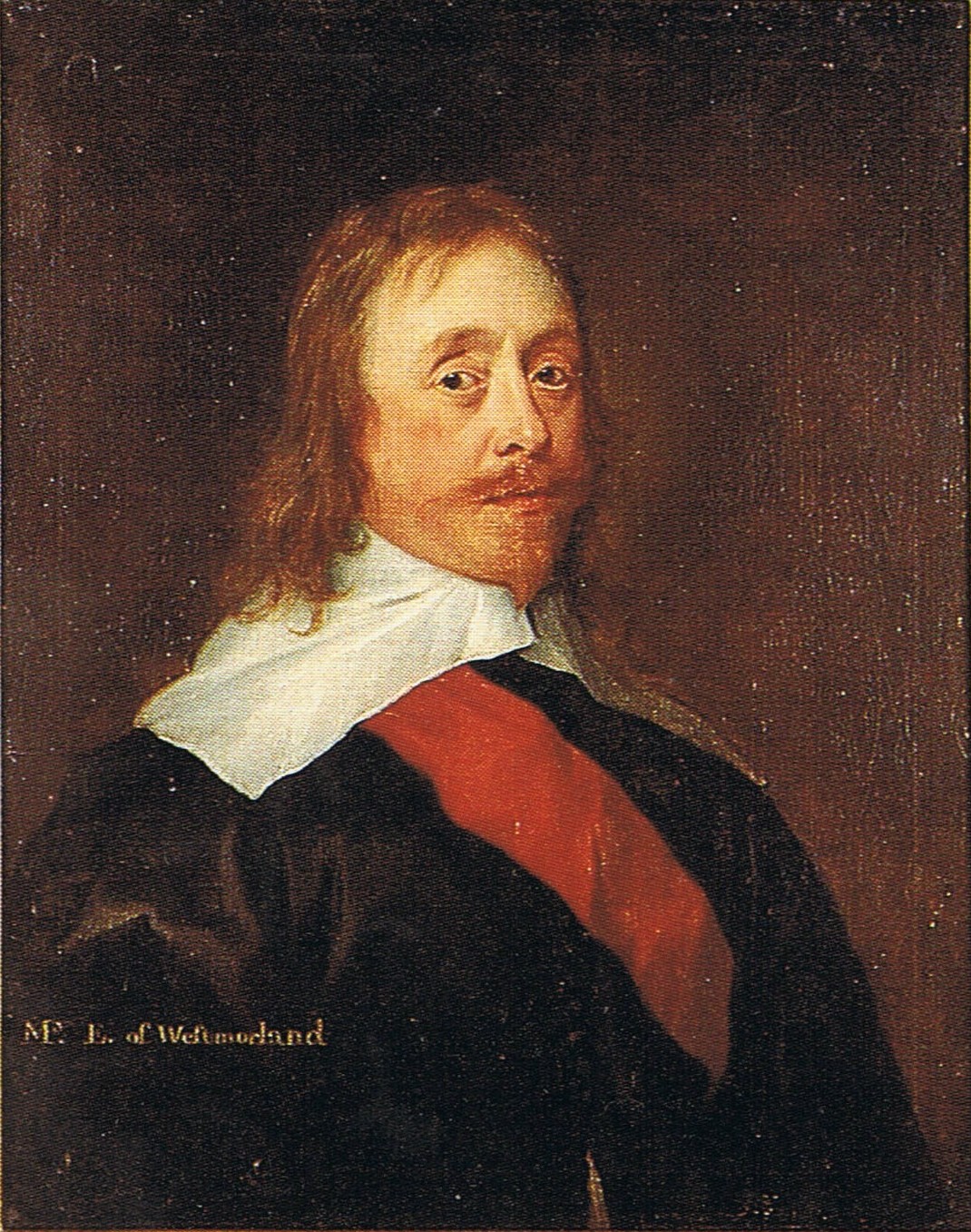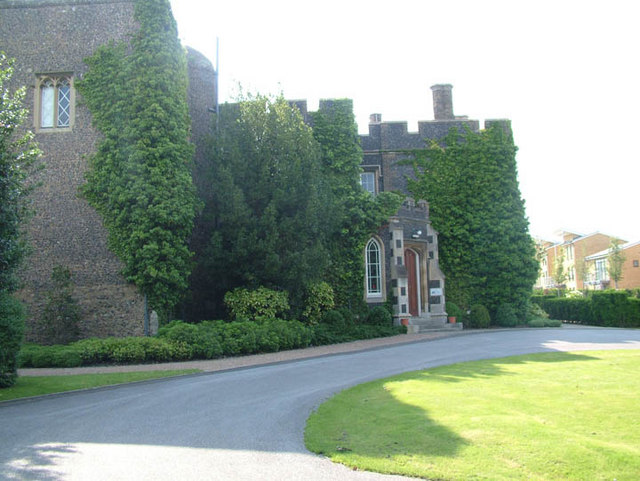|
Henry Stafford, 1st Earl Of Wiltshire
Henry Stafford, 1st Earl of Wiltshire (c. 1479 – 6 April 1523) was an English peer. Family Henry Stafford, born c.1479, was the younger of two sons of Henry Stafford, 2nd Duke of Buckingham, and Lady Catherine Woodville, the daughter of Richard Woodville, 1st Earl Rivers, by Jacquetta of Luxembourg, daughter of Pierre de Luxembourg, Count of St. Pol, and was thus a nephew of Elizabeth Woodville and King Edward IV. By his father's marriage to Catherine Woodville, Stafford had an elder brother, Edward Stafford, 3rd Duke of Buckingham, and two sisters, Elizabeth, who married Robert Radcliffe, 1st Earl of Sussex, and Anne, who married firstly, Sir Walter Herbert (d. 16 September 1507), an illegitimate son of William Herbert, 1st Earl of Pembroke, and secondly, George Hastings, 1st Earl of Huntingdon. After the execution of the 2nd Duke of Buckingham, his widow, Catherine Woodville, married Jasper Tudor, second son of Owen Tudor and King Henry V's widow, Catherine of Valo ... [...More Info...] [...Related Items...] OR: [Wikipedia] [Google] [Baidu] |
The Right Honourable
''The Right Honourable'' (abbreviation: The Rt Hon. or variations) is an honorific Style (form of address), style traditionally applied to certain persons and collective bodies in the United Kingdom, the former British Empire, and the Commonwealth of Nations. The term is predominantly used today as a style associated with the holding of certain senior public offices in the United Kingdom, Canada, New Zealand, and, to a lesser extent, Australia. ''Right'' in this context is an adverb meaning 'very' or 'fully'. Grammatically, ''The Right Honourable'' is an adjectival phrase which gives information about a person. As such, it is not considered correct to apply it in direct address, nor to use it on its own as a title in place of a name; but rather it is used in the Grammatical person, third person along with a name or noun to be modified. ''Right'' may be abbreviated to ''Rt'', and ''Honourable'' to ''Hon.'', or both. ''The'' is sometimes dropped in written abbreviated form, but is ... [...More Info...] [...Related Items...] OR: [Wikipedia] [Google] [Baidu] |
Jasper Tudor
Jasper Tudor, Duke of Bedford (c. November 143121 December 1495) was the uncle of King Henry VII of England and a leading architect of his nephew's successful accession to the throne in 1485. He was a member of the Tudor family of Penmynydd. Jasper Tudor's coat of arms, granted to him by his maternal half-brother, King Henry VI, quarters the three lilies of France with the three lions of England, with the addition of a ''bordure azure with martlets or'' (that is, a blue border featuring golden martlets). Family and early life Jasper was the second son of Sir Owen Tudor and the former queen Catherine of Valois, the widow of King Henry V of England. He was thus half-brother to Henry VI. Through his father, Jasper was a descendant of Ednyfed Fychan, Llywelyn the Great's renowned chancellor. His mother was a daughter of King Charles VI of France. Jasper was born at the bishop of Ely's manor at Hatfield, Hertfordshire, in 1431, his parents' second child. After the death of Ja ... [...More Info...] [...Related Items...] OR: [Wikipedia] [Google] [Baidu] |
Welsh Marches
The Welsh Marches () is an imprecisely defined area along the border between England and Wales in the United Kingdom. The precise meaning of the term has varied at different periods. The English term Welsh March (in Medieval Latin ''Marchia Walliae'') was originally used in the Middle Ages to denote the marches between England and the Principality of Wales, in which Marcher lords had specific rights, exercised to some extent independently of the king of England. In modern usage, "the Marches" is often used to describe those English counties which lie along the border with Wales, particularly Shropshire and Herefordshire, and sometimes adjoining areas of Wales. However, at one time the Marches included all of the historic counties of Cheshire, Shropshire, Herefordshire, Worcestershire and Gloucestershire. Etymology The term ''March'' is from the 13th-century Middle English ''marche'' ("border region, frontier"). The term was borrowed from Old French ''marche'' ("limit, bo ... [...More Info...] [...Related Items...] OR: [Wikipedia] [Google] [Baidu] |
Elizabeth Of York
Elizabeth of York (11 February 1466 – 11 February 1503) was List of English royal consorts, Queen of England from her marriage to King Henry VII of England, Henry VII on 18 January 1486 until her death in 1503. She was the daughter of King Edward IV and his wife, Elizabeth Woodville, and her marriage to Henry VII followed his victory at the Battle of Bosworth Field, which marked the end of the civil war known as the Wars of the Roses. Elizabeth's younger brothers, the "Princes in the Tower", mysteriously disappeared from the Tower of London shortly after their uncle Richard III of England, Richard III seized the throne in 1483. Although the 1484 Act of Parliament ''Titulus Regius'' declared the marriage of her parents as invalid, Elizabeth and her sisters returned to court under Richard III, after spending ten months in Right of asylum#Medieval England, sanctuary in Westminster Abbey. It was rumoured that Richard was plotting to marry Elizabeth. The final victory of the Hous ... [...More Info...] [...Related Items...] OR: [Wikipedia] [Google] [Baidu] |
Margaret Beaufort, Countess Of Richmond And Derby
Lady Margaret Beaufort ( ; 31 May 1443 – 29 June 1509) was a major figure in the Wars of the Roses of the late 15th century, and mother of King Henry VII of England, the first Tudor monarch. She was also a second cousin of Kings Henry VI, Edward IV and Richard III of England. A descendant of King Edward III, Lady Margaret passed a disputed claim to the English throne to her son, Henry Tudor. Capitalising on the political upheaval of the period, she actively manoeuvered to secure the crown for her son. Margaret's efforts ultimately culminated in Henry's decisive victory over King Richard III at the Battle of Bosworth Field. She was thus instrumental in orchestrating the rise to power of the Tudor dynasty. With her son crowned Henry VII, Margaret wielded a considerable degree of political influence and personal autonomy. She was also a major patron and cultural benefactor during her son's reign, initiating an era of extensive Tudor patronage. Margaret is credited with ... [...More Info...] [...Related Items...] OR: [Wikipedia] [Google] [Baidu] |
Order Of The Bath
The Most Honourable Order of the Bath is a British order of chivalry founded by King George I of Great Britain, George I on 18 May 1725. Recipients of the Order are usually senior British Armed Forces, military officers or senior Civil Service (United Kingdom), civil servants, and the monarch awards it on the advice of His Majesty's Government. The name derives from an elaborate medieval ceremony for preparing a candidate to receive his knighthood, of which ritual bathing (as a symbol of Ritual purification, purification) was an element. While not all knights went through such an elaborate ceremony, knights so created were known as "knights of the Bath". George I constituted the Knights of the Bath as a regular Order (honour), military order. He did not revive the order, which did not previously exist, in the sense of a body of knights governed by a set of statutes and whose numbers were replenished when vacancies occurred. The Order consists of the Sovereign of the United King ... [...More Info...] [...Related Items...] OR: [Wikipedia] [Google] [Baidu] |
Henry VII Of England
Henry VII (28 January 1457 – 21 April 1509), also known as Henry Tudor, was King of England and Lord of Ireland from his seizure of the crown on 22 August 1485 until his death in 1509. He was the first monarch of the House of Tudor. Henry was the son of Edmund Tudor, 1st Earl of Richmond, and Lady Margaret Beaufort. His mother was a great-granddaughter of John of Gaunt, an English prince who founded the Lancastrian cadet branch of the House of Plantagenet. His father was the half-brother of the Lancastrian king Henry VI. Edmund Tudor died three months before his son was born, and Henry was raised by his uncle Jasper Tudor, a Lancastrian, and William Herbert, a supporter of the Yorkist branch of the House of Plantagenet. During Henry's early years, his uncles and the Lancastrians fought a series of civil wars against the Yorkist claimant, Edward IV. After Edward retook the throne in 1471, Henry spent 14 years in exile in Brittany. He attained the throne when his f ... [...More Info...] [...Related Items...] OR: [Wikipedia] [Google] [Baidu] |
Battle Of Bosworth Field
The Battle of Bosworth or Bosworth Field ( ) was the last significant battle of the Wars of the Roses, the civil war between the houses of House of Lancaster, Lancaster and House of York, York that extended across England in the latter half of the 15th century. Fought on 22 August 1485, the battle was won by an alliance of Lancastrians and disaffected Yorkists. Their leader Henry Tudor, Earl of Richmond, became the first English monarch of the Tudor dynasty by his victory and subsequent marriage to a Yorkist princess. His opponent Richard III, the last king of the House of York, was killed during the battle, the last English monarch to fall in battle. Historians consider Bosworth Field to mark the end of the Plantagenet dynasty, making it one of the defining moments of English history. Richard's reign began in 1483 when he ascended the throne after his twelve-year-old nephew, Edward V, was declared illegitimate. The boy and his younger brother Richard of Shrewsbury, Richard ... [...More Info...] [...Related Items...] OR: [Wikipedia] [Google] [Baidu] |
Richard III Of England
Richard III (2 October 1452 – 22 August 1485) was King of England from 26 June 1483 until his death in 1485. He was the last king of the Plantagenet dynasty and its cadet branch the House of York. His defeat and death at the Battle of Bosworth Field marked the end of the Middle Ages in England. Richard was created Duke of Gloucester in 1461 after the accession to the throne of his older brother Edward IV. This was during the period known as the Wars of the Roses, an era when two branches of the royal family contested the throne; Edward and Richard were Yorkists, and their side of the family faced off against their Lancastrian cousins. In 1472, Richard married Anne Neville, daughter of Richard Neville, 16th Earl of Warwick, and widow of Edward of Westminster, son of Henry VI. He governed northern England during Edward's reign, and played a role in the invasion of Scotland in 1482. When Edward IV died in April 1483, Richard was named Lord Protector of the realm for Ed ... [...More Info...] [...Related Items...] OR: [Wikipedia] [Google] [Baidu] |
Stone, Kent
Stone, also known as Stone-next-Dartford, is a village and civil parish in the Borough of Dartford in Kent, England, about 3 km east of Dartford and 27 kilometres from central London. It lies on the south bank of the River Thames. The A226 road, A226 (London Road) runs through Stone, linking Dartford with Greenhithe, Kent, Greenhithe and Gravesend; the A2 (Roman Watling Street) and M25 motorway pass just north of the parish. The area of Stone includes part of the Bluewater Shopping Centre. The parish population was 10,778 in the 2011 census, rising to about 12,890 by 2021. History Stone has evidence of a very early settlement. Numerous Palaeolithic flint tools and handaxes have been found in the parish (for example at Crossways Business Park), reflecting human activity up to one million years ago. In nearby Swanscombe (just east of Stone) pieces of a 400,000-year-old human skull were discovered along with Acheulean (handaxe) tools – some of the earliest human remains in Euro ... [...More Info...] [...Related Items...] OR: [Wikipedia] [Google] [Baidu] |
Lady Bridget Wingfield
Bridget Wiltshire (later: Wingfield, then Hervey, then Tyrwhitt; died January 1534) was an English courtier. She was the neighbour, close friend and lady-in-waiting to Anne Boleyn, the second wife of Henry VIII of England. She was the wife of Sir Richard Wingfield (widower of Catherine Woodville) and the daughter of Sir John Wiltshire of Stone Castle, Kent, a neighbour of the Boleyn family. Life Bridget was born on an unknown date, the daughter of Sir John Wiltshire, and Margaret Graunt (daughter of Simon le Grand and Catherine Percy), of Stone Castle, in Shurland, Kent, She became a member of Catherine of Aragon's household, sometime before 1520, as Bridget was present at the Field of the Cloth of Gold in France. After Anne Boleyn became queen in 1533, Bridget Wiltshire was appointed to be her Lady of the Bedchamber. A letter written by Anne Boleyn to Bridget was used as evidence in the trial of the Queen for adultery and conspiring against the life of the King. As Bridge ... [...More Info...] [...Related Items...] OR: [Wikipedia] [Google] [Baidu] |
Richard Wingfield
Sir Richard Wingfield KG of Kimbolton Castle (c. 1469 – 22 July 1525) was an influential courtier and diplomat in the early years of the Tudor dynasty of England which included being English Ambassador to France. Life The Wingfield family originated from Wingfield Castle in the Suffolk village of Wingfield. Richard was born at Letheringham, Suffolk to Sir John Wingfield (c. 1428 – 10 May 1481) member of the Privy Council of Edward IV, and Sheriff of Norfolk and Suffolk, and his wife Elizabeth FitzLewis (c. 1431–1497) who was born in West Horndon, Essex, to John FitzLewis and Anne Montague. He was the eleventh of twelve sons; his brothers were Sir John Wingfield, Henry Wingfield, William Wingfield, Sir Thomas Wingfield, Sir Robert Wingfield (a diplomat), Sir Walter Wingfield, Sir Edward Wingfield (who was married to one of the Woodville sisters, however historical documents are unclear as to which one), Sir Humphrey Wingfield (a lawyer and Speaker of t ... [...More Info...] [...Related Items...] OR: [Wikipedia] [Google] [Baidu] |








